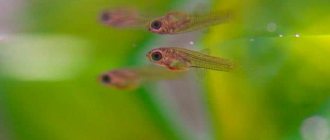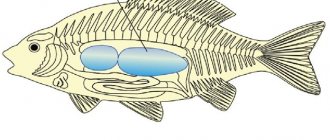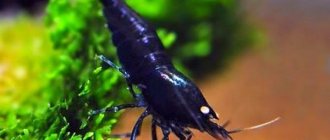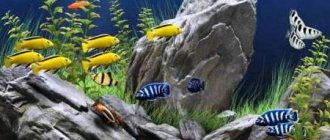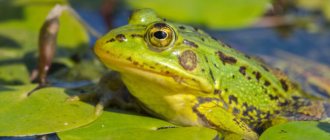Asexual reproduction of hydra by budding
- Budding is a form of asexual reproduction that results from the growth of a part of a cell or an area of the body, resulting in separation from the original organism into two individuals.
- Hydra reproduces by asexual budding. In summer, when the animal is well-fed and healthy, the usual method of reproduction is budding. This happens at any time of the year.
- The bulge appears due to repeated mitotic divisions of interstitial cells of the epidermis near the middle or basal part of the body.
- It grows in the form of a rudiment, the wall of which consists of the epidermis and gastrodermis, and the internal lumen continues the gastrovascular cavity of the parent.
- The bud increases in size, and a mouth and a circle of tentacles form at its free end.
- Once the bud is fully developed, it contracts as a base (an attachment point to the parent hydra) and finally separates from the parent body to become an independent organism.
- This process can take approximately 3 days from start to finish.
- Sometimes several buds appear simultaneously on one parent, and these in turn may produce secondary buds, so as to form a group that temporarily resembles a colonial hydroid.
Narcomedusae
An order of cnidarians that do not have a polyp stage in their life cycle. You can recognize them by the presence of primary tentacles on the outside of the umbrella. They have a lens-shaped body with a dissected umbrella edge. Some individuals have miniature secondary tentacles. On the blades of the umbrella there are rounded sensory organs with statocysts.
Hydroids: Bathykorus bouilloni. Posted by Kevin Rascoff, public domain
Another distinctive feature of them is a modification of the digestive system. A wide and short oral proboscis (manubrium) is spread over the inner surface of the umbrella; the stomach is located in its opening. The edges of the stomach in many species create outgrowths in the form of pockets - gastric pouches . They do not have radial channels. The genital organs are located in the stomach or its pockets.
The narcomedus planula has its oral side facing sideways, where the tentacles are formed. The larva immediately turns into a jellyfish, bypassing the polyp stage. Some representatives of the genera Cunina (Cuninidae) and Pegantha (Solmarisidae) lead a parasitic lifestyle at certain stages of the life cycle. Their larvae settle on hydro- and scyphojellyfish, polychaete worms, copepods or fish. They grow a proboscis and a pair of tentacles. They immerse the proboscis into the digestive system of the host, and parasitic larvae of the second generation or jellyfish bud from the back part, which proceed to parasitize the cavity of the host’s stomach.
Hydra sexual reproduction
- Hydra reproduces sexually through the fusion of gametes when environmental conditions become unfavorable (usually in the fall).
- Factors such as temperature changes (low temperatures) and lack of sufficient food sources cause the body to begin developing gonads in preparation for sexual reproduction.
- Sexual reproduction in hydra is limited only to certain periods.
- During sexual reproduction, the gonads develop temporarily from interstitial cells of the epidermis, which accumulate to form bulges in the body.
- The convexity of the gonads is different from the convexity of the buds because the mesogloe and gastrodermis are not included in the gonads.
- Some species are hermaphrodite .
- Most species are unisexual or dioecious , in which the sexes are separate.
- The male is smaller in size and has 1 to 8 conical testes with a mammillary structure above them, whereas the female is larger and has 10–2 ovaries.
- Even in hermaphrodite species, self-fertilization is avoided because sperm and eggs mature at different times. The testes mature earlier than the ovaries (protandrosis).
Limnomedusae
Hydroid limnojellyfishes are an order of jellyfish, which in most cases also do not have a polyp stage. Solitary, rarely colonial. Among them are those that can cause painful burns in humans (Gonionemus vertens) and inhabitants of fresh waters (the genera Limnocnida and Craspedacusta). Outwardly, they are similar to trachemedusae, but lack the tissue compaction along the edge of the umbrella.
Limnomelusa includes the poisonous cross jellyfish, or gonionemus vertens, which lives in the coastal zone of the Pacific Ocean, but is also found in the Northern Hemisphere of the Atlantic. Its development cycle includes a small (0.5 mm) polyp into which the planula turns. Frustulae bud from the polyps - larvae similar to planula, but lacking cilia. They become either polyps or jellyfish.
Hydroid: cross jellyfish
The cross has a transparent bell with a diameter of 25-40 mm, through which the colored gonads in the form of a cross, located in the four radial canals of the digestive system, are visible. Along the edge of the umbrella you can see 60 thin curving tentacles with thickenings - batteries of stinging cells. The burn of the stinging cells of the cross is painful for humans, but non-fatal.
Testicles
- Testes are conical projections of the body wall, the number of which varies from a few to many.
- It is formed by rapidly multiplying interstitial cells of the epidermis, which is externally covered with a protective capsule consisting of large epidermal cells.
- They are usually located near the distal or oral end of the body, and if there are many of them, they can cover most of the body.
- The interstitial cells thus enclosed become spermatocytes, each of which then divides twice to produce four spermatozoa.
- Interstitial cells at the base of the conical outgrowth (testes) act as spermatogonia. They undergo typical spermatogenesis and go through the primary , secondary and spermatid stages to become spermatozoa .
- Each sperm has nuclear material at the front (conical head), a short neck and a wavy tail.
- At maturity, sperm are released through a rupture in the wall of the testis at its apical nipple-like projection, so the released sperm float in the water, where they remain active for a day or two.
Trachymedusae
Jellyfish with a bullet-shaped bell with a straight edge and a ring of padded tissue at the bottom. With gonads on radial canals, statocysts and many thin tentacles. There is no polyp stage in their life cycle and the planula immediately becomes a jellyfish. The species Halitrephes maasi lives at impressive depths (up to 1500 m), has 70 thin tentacles, a transparent body with a straight umbrella edge.
Halitrephes maasi. Posted by NOAA, Public Domain
Ovaries
- The ovaries are ovoid structures located near the basal end of the body.
- The green hydra usually has one ovary, while the brown hydra forms up to eight ovaries.
- Formed as a result of the proliferation of interstitial cells that make up the primary oogonia.
- One of the oogonia, usually located in the center, becomes larger and amoeboid-shaped with a large nucleus called an oocyst.
- The oocyst feeds on smaller neighboring interstitial cells, which become yolk or reserve food to be used later while the young hydra still has no mouth to eat.
- The oocyst greatly increases in size and undergoes two maturation divisions, resulting in the formation of 2 polar bodies and reduction of the chromosomes to a haploid number of 15 in the case of Pelmatohydra.
- The mature egg is the female reproductive cell, which is a large spherical mass loaded with yolk granules and occupying most of the space inside the ovary.
- When the egg matures, the epidermis over it ruptures and separates, forming a cup-shaped vessel containing the exposed egg.
- The egg is not released immediately, but remains attached to the wall of the ovary.
- One ovary usually contains one egg, but rarely 2 (Chllorohydra viridissima) and even more (Hydra dioecia) eggs are found.
- The egg secretes a gelatinous substance around itself.
How do hydroids differ from other coelenterates?
Hydroids are the most simply structured coelenterates with a clearly defined two-layer structure.
- This is the only class whose colonies can include both polyps and jellyfish.
- Only among representatives of this class of cnidarians there are freshwater species.
- Hydroid polyps never have septa in the gastric cavity, and their nervous system does not form ganglia or sensory organs.
- In hydroid jellyfish, unlike scyphoid jellyfish, the radial canals are unbranched.
- Hydroid nematocysts lie only in the epidermis (ectoderm), but the diversity of their stinging cells is great.
- There are no cells in the mesoglea.
- Gonads from germ cells are formed either in the gastrodermis or in the epidermis.
- In general, they are characterized by alternating generations of jellyfish (sexual generation) and polyp (asexual generation). But in many species, one of these generations (usually the jellyfish) is suppressed or completely absent. In the latter case, the remaining generation (usually a polyp) becomes sexual.
- The skeleton (not everyone has it) is secreted outward by the ectoderm in the form of a cuticle, sometimes impregnated with calcium.
- In hydroid jellyfish, along the edge of the umbrella there is a special membrane - a sail (vellum) .
- On the tentacles of jellyfish there is one type of sensory organs: either only statocysts (most often), or eyes, eyespots, or complex visual organs with lenses.
 Statocysts are organs of balance; they are closed vesicles lined with sensitive epithelium and filled with fluid. Inside each bubble (jellyfish have them there are pieces of calcium carbonate that act as statoliths.
Statocysts are organs of balance; they are closed vesicles lined with sensitive epithelium and filled with fluid. Inside each bubble (jellyfish have them there are pieces of calcium carbonate that act as statoliths.
Hydroid Far East
Fertilization
- Fertilization occurs when ripe sperm emerge from the testes, swim in the water until they approach and surround the extruded egg.
- Several sperm can penetrate the jelly, but only one enters the egg and fuses completely with it. This process is called fertilization, and the fertilized egg is called an ovum or zygote.
- The male and female nuclei combine to form the fusion or nucleus of the zygote.
- The egg will die and degenerate if fertilization does not occur within a short time after its exposure.
Polyp habitat
Hydras can be found in slowly flowing or completely stagnant water of lakes, ponds, and river backwaters, which is rich in vegetation.
This is interesting. Four species of polyps live in Russian reservoirs, visually practically indistinguishable from each other. These are the common, stemmed, stemless and brown hydra.
Some of the varieties of polyps have a green or brown body color. This factor is due to the presence of zoochlorella - symbiotic algae - in their body. You can track such hydras by collecting water from the lake in a glass jar along with duckweed floating on its surface. When this water settles, thin brown, green or white tubes can be traced on the walls of the jar, which are nothing more than freshwater hydras.
Development
Development also begins after fertilization, when the egg or zygote is still attached to the parent, undergoing fragmentation or segmentation.
Split
Since there is little yolk in the egg, cleavage is indefinite, complete and equal ( holoblastic ), resulting in the formation of blastomeres - cells of the same size.
Blastulation
- Cleavage results in the formation of a hollow spherical ball called a blastula or coeloblastula, with a narrow cavity ( blastocoel ).
- Equal cells or blastomeres are located in a single surface layer.
Gastrulation
- Some cells of the blastular wall slough off and migrate inward ( multipolar ingression ).
- While other cells form outer and inner cells by tangential division ( primary detachment ). As a result, the blastocoel is completely filled with new cells, and the hollow blastula turns into a solid gastrula.
- The grastula consists of a single layer of outer cells forming the ectoderm , and an inner solid mass of cells forming the endoderm .
Gastrocel
- Soon, a new cavity called the gastrocoel or archenteron .
- membrane or is formed around the gastrula , allowing the embryo to survive environmental changes.
- The outer layer of the cyst wall is thick, horny or chitinoid and spiny, while the inner layer is a thin gelatinous membrane.
- The embryo remains dormant until environmental conditions improve.
- It can withstand drying and freezing, and can withstand drought and winter. It is also likely that this resting stage serves for dispersal, as it can be carried by the wind or in the mud on the animals' feet to other bodies of water in which water is present.
Hatching
- With the onset of favorable water and temperature conditions, development resumes.
- Interstitial cells arise in the ectoderm, and mesogloe is secreted between the two cell layers.
- The embryo elongates, and at one end a circle of tentacle primordia is formed, in the middle of which a mouth appears.
- As the embryo increases in size, the shell or cyst ruptures, and a young hydra with tentacles hatches from it. Soon it develops into an adult.
- There are no free larval stages in the development of hydra.
The structure of the inner layer of cells
Endoderm lines the entire intestinal cavity from the inside. It consists of digestive muscle and glandular cells.
Endoderm
Digestive system
There are more digestive muscle cells than others. Their muscle fibers are capable of contraction. When they shorten, the hydra's body becomes thinner. Complex movements (movement by “tumbling”) occur due to contractions of muscle fibers of ectoderm and endoderm cells.
Each of the digestive-muscle cells of the endoderm has 1-3 flagella. Vibrating flagella create a current of water, which drives food particles towards the cells. Digestive muscle cells of the endoderm are capable of forming pseudopods, capturing and digesting small food particles in the digestive vacuoles.
The structure of the digestive muscle cell
Glandular cells in the endoderm secrete digestive juice into the intestinal cavity, which liquefies and partially digests food.
The structure of the glandular cell
Prey is captured by the tentacles using stinging cells, the venom of which quickly paralyzes small victims. By coordinated movements of the tentacles, the prey is brought to the mouth, and then, with the help of body contractions, the hydra is “put on” the victim. Digestion begins in the intestinal cavity (cavitary digestion) and ends inside the digestive vacuoles of the epithelial-muscle cells of the endoderm (intracellular digestion). Nutrients are distributed throughout the hydra's body.
When the digestive cavity contains remains of the prey that cannot be digested, and waste products of cellular metabolism, it contracts and empties.
Breath
Hydra breathes oxygen dissolved in water. She has no respiratory organs, and she absorbs oxygen over the entire surface of her body.
Circulatory system
Absent.
Selection
The release of carbon dioxide and other unnecessary substances formed during life processes is carried out from the cells of the outer layer directly into the water, and from the cells of the inner layer into the intestinal cavity, then out.
Nervous system
Below the skin-muscle cells are star-shaped cells. These are nerve cells (1). They connect with each other and form a nerve network (2).
Nervous system and irritability of the hydra
If you touch the hydra (2), then excitation (electrical impulses) occurs in the nerve cells, which instantly spreads throughout the entire nervous network (3) and causes contraction of the skin-muscle cells and the entire body of the hydra shortens (4). The response of the hydra body to such irritation is an unconditioned reflex.
Regeneration
- Regeneration is the body's ability to restore lost or damaged body parts. This usually occurs after an accident, but can be induced artificially.
- Hydra has a tremendous ability to regenerate, which was discovered by Abraham Trembley in 1745. Since then, Hydra has become a favorite material for regeneration experiments.
- If a living Hydra animal is cut into 2 or 3 or more pieces, each missing piece will grow to become a whole animal.
- A hydra fragment with a diameter of 1/6 mm or more is capable of regenerating an entire person.
- This is not reproduction, but a normal method of reproduction.
- Hydra regeneration was made possible thanks to the amazing generative ability of totipotent interstitial cells.
- One of the characteristic features of the regenerating element in Hydra is that it maintains polarity. At the end located near the mouth, the mouth and tentacles develop, and at the end located closer to the base, a new pedal disk is formed.
Nutrition process
This miniature creature is a real predator. It is very interesting to find out what freshwater hydra eats. The water is home to many small animals: cyclops, ciliates, and crustaceans. They serve as food for this creature. Sometimes it can eat larger prey, such as small worms or mosquito larvae. In addition, these coelenterates cause great damage to fish ponds, because caviar becomes one of the things that hydra feeds on.
In the aquarium you can watch in all its glory how this animal hunts. The hydra hangs with its tentacles down and at the same time arranges them in the form of a network. Her torso sways slightly and describes a circle. Prey swimming nearby touches the tentacles and tries to escape, but suddenly stops moving. The stinging cells paralyze her. Then the coelenterate creature pulls it to its mouth and eats it.
If the animal has eaten well, it swells. This creature can devour prey that is larger than itself. Its mouth can open very wide, sometimes part of the prey’s body can be clearly seen from it. After such a spectacle, there is no doubt that the freshwater hydra is a predator in its feeding method.
Immortality in Hydra
- P. Brian (1955) and others noted that the hydra is potentially immortal due to the fact that it replaces old body cells with new ones every 45 days.
- Just below the tentacles is a growth zone where interstitial cells give rise to all the other cells of the body. As new cells form, old cells are pushed toward the ends of the tentacles and pedal disc, from where they fall out.
- As old cells are lost from either pole of the Hydra, new ones continue to replace the old ones, allowing the Hydra to continue to live for a long period of time.
- It has been shown that if the interstitial cells of the growth zone are destroyed, then the death of the hydra occurs within a few days.
If you find an error, please select a piece of text and press Ctrl+Enter.
Nervous system and breathing
In one of the layers of the body of this creature there is a scattered nervous system, and in the other there is a small number of nerve cells. In total, there are 5 thousand neurons in the animal’s body. The animal has nerve plexuses near the mouth, on the sole and on the tentacles.
Hydra does not divide neurons into groups. The cells perceive irritation and send a signal to the muscles. The nervous system of an individual contains electrical and chemical synapses, as well as opsin proteins. Speaking about what the hydra breathes, it is worth mentioning that the process of excretion and respiration occurs over the surface of the entire body.
Subkingdom multicellular
The body is formed by many cells. Cells are differentiated in form and function, have lost or almost lost their independence, form different tissues and organs, which are combined into a whole organism. The organism has a complex individual development - ontogenesis. From a fertilized (or unfertilized) egg, an adult organism develops in the process of ontogenesis. Ontogenesis of multicellular organisms includes the fragmentation of the egg into many cells (blastomeres), from which germ layers and organs are further formed.


